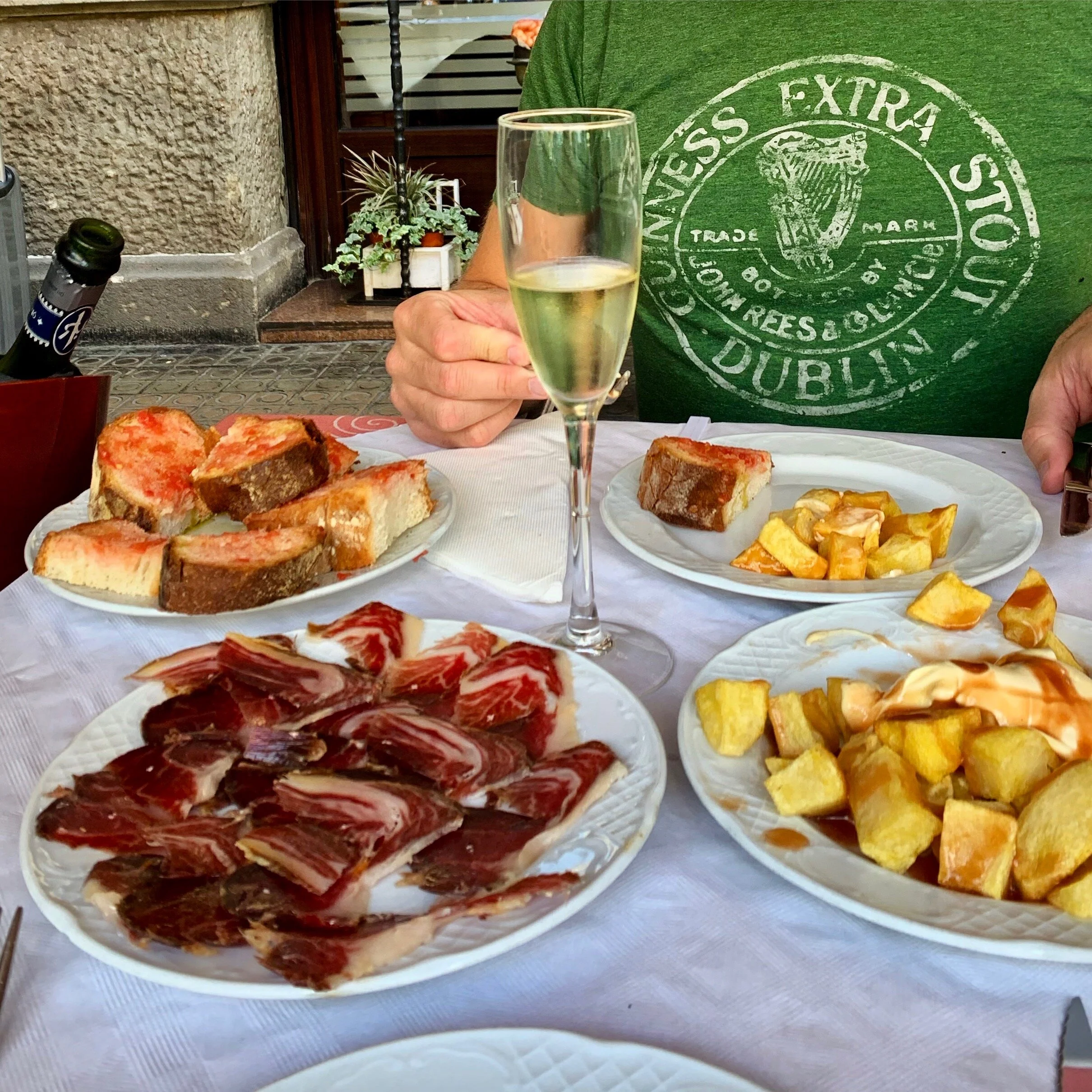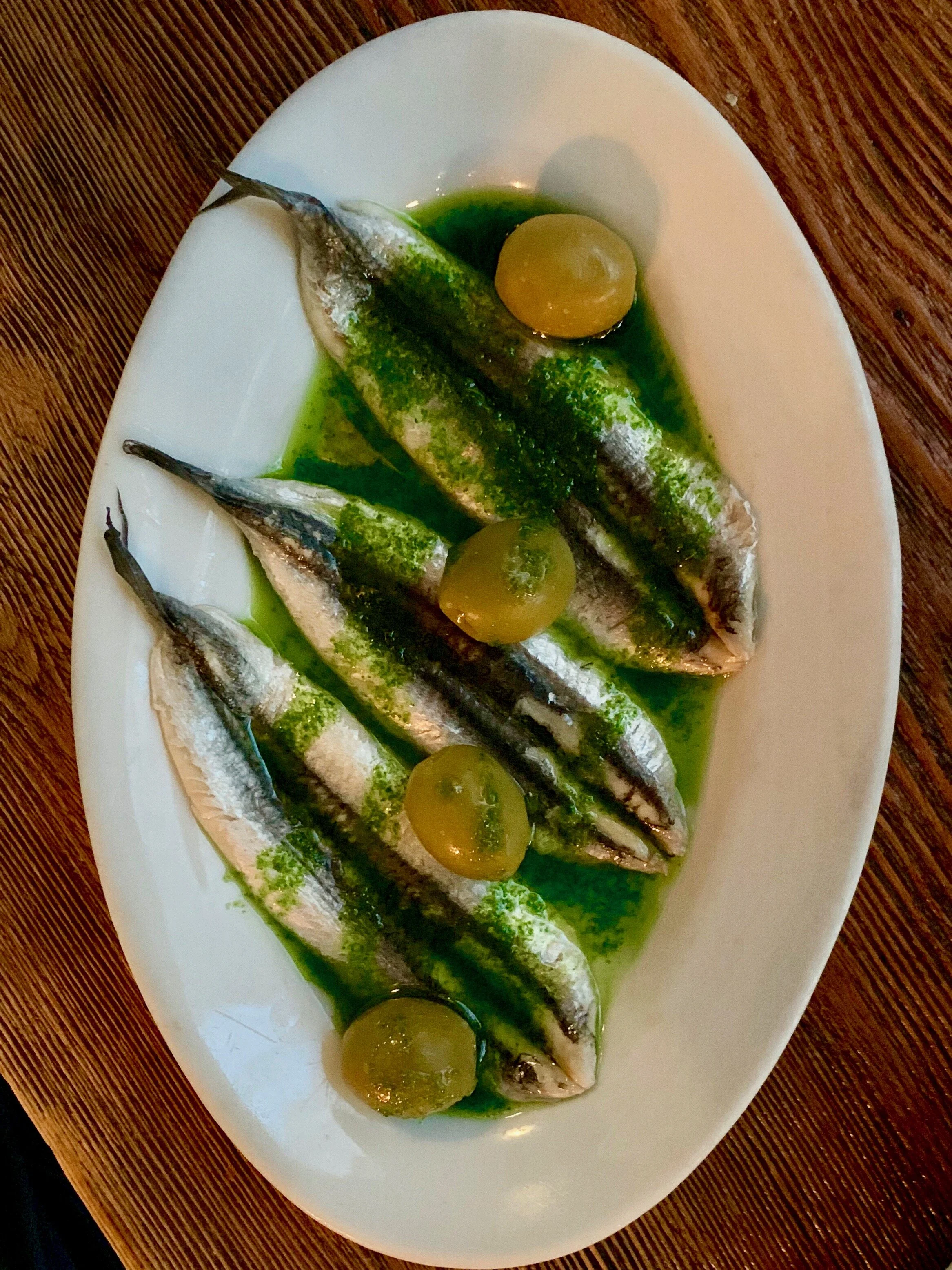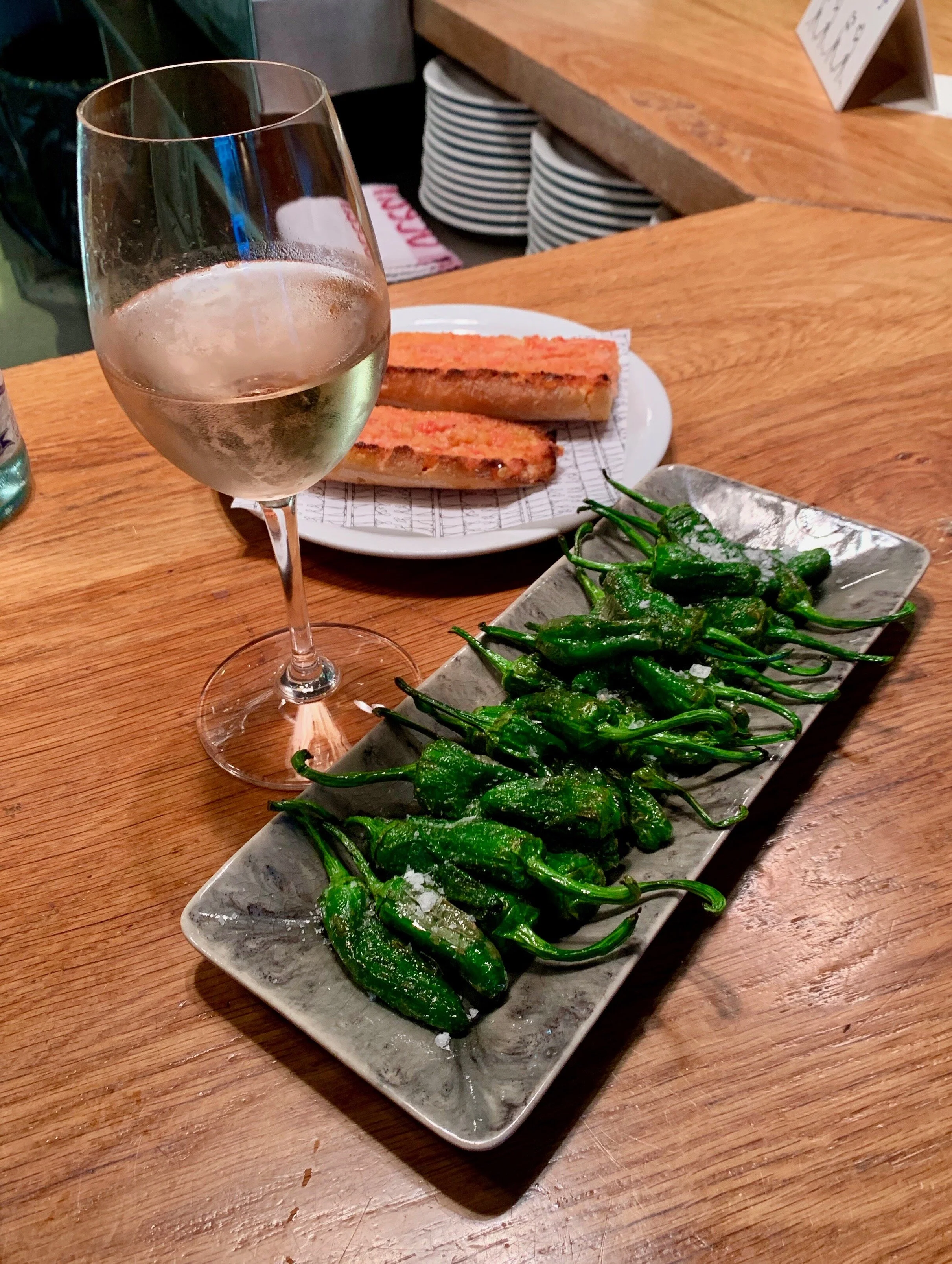Bonding Over Boquerones - Tapas Culture in Barcelona
Tapas in Barcelona.
It’s a little after noon and I’m sitting at a local tapas bar in Barcelona, still warding off the jet lag from my flight. I poke at the anchovy-stuffed olive floating in my vermouth with a toothpick. The salty green ovoid submerges, bumps into the orange slice under the ice, and rises to the surface again. My friend and I aren’t really talkative at the moment. We’re a little hazy, and a lot hungry.
A few minutes later a plate of glistening Jamón Serrano is served. The thin slices of rich, salty meat meld perfectly with the sweet vermouth. Then marinated green beans and smoked codfish appear, tangy and light. Then fried calamari. We are firmly entrenched in our first tapas experience of the trip, and the day is suddenly looking a lot brighter.
The idea of a tapa is simple. A few bites of something hot or cold loaded with flavor that stimulates the appetite. “Tapa” derives from the Spanish verb tapar, to cover. The etymology of the word is thought to come from the Andalusian practice of covering one’s glass of sweet sherry with thin slices of bread or meat to keep the fruit flies from getting at the drink.
The culture of tapas is just as straightforward. Gather friends around a table, open some bottles, and serve a variety of small dishes for everyone to enjoy. Lively conversation shared over food and drink is about as social as it gets.
Boquerones en Vinaigre are as delicious as they are beautiful.
Like cities across Spain, Barcelona is full of small bodegas and bars catering to the tapas culture. Each offers its own array of tapas, often using family recipes. One bodega features escalivada—grilled eggplant and red bell pepper served on toasted bread with olive oil and anchovies. Another serves up roasted snails swimming in piquant tomato sauce studded with chorizo. A third specializes in crispy french fries topped with minced ham and fried eggs. Endless glasses of chilled Cava (the region’s sparkling wine), sweet vermouth, beer, and cider keep the energy flowing.
It’s common practice to drift from one bodega to another over the course of the evening. The small servings make it easy to move on to explore another bar because you’re never committed to a large meal at a single table. One night, we strike up a conversation with fellow diners at a nearby table over their red seabream poached in cider and butter. Soon thereafter we’re invited to join them at the next stop, and we happily accept.
We visit El Chigre 1769, a sideria specializing in Catalan food and Asturian cider. I’m specifically interested in their boquerones, flayed anchovies marinated in vinegar and pureed parsley. They are as delicious to taste as they are beautiful to behold. The bright green herb puree against the white flesh of the fish is irresistible, and down they go. Briny meat and acidic marinade provide amazing contrast. It’s refreshing, yet it makes me thirsty.
This is where the cider comes in. Asturia, a region in northwest Spain, is known for their dry, earthy versions of cider. It’s a serious beverage and is at its absolute best with something to eat. I happily oblige its food-friendly tendencies, but we’re all out of anchovies. The very nature of tapas is to enjoy small amounts of many things, and so we order more. Scalded prawns. Chorizo braised in cider. Grilled mussels. Each distinct in its preparation and ingredients. Every bite is an explosion of different flavors.
Next is Bodega La Puntual, a lively bodega tucked down a side alley in the Gothic Quarter. A few tables dot the front of the restaurant, which balloons magically into a big, wide room in the back. We’re lucky enough to get a table near the door, and immediately order bottles of Cava. We order more jamón and some potato chips doused in salsa Espinaler, a local hot sauce.
Then we dive into what could be the quintessential tapa dish— patatas bravas. These “brave potatoes” date back to at least the 16th century when a European famine and the Thirty Years’ War forced people to rely more heavily on potatoes for food. Today, the dish is an absolute staple of tapas dining. Irregularly cut cubes of potatoes are fried and tossed in a spicy brava sauce made from pureed tomatoes, smoked paprika, garlic, and onion. Many versions finish off the dish with a drizzle of garlicky aioli.
Tapas are meant to be small and varied in style.
Creating this kind of experience at home is actually quite easy. The hardest part is deciding how many different tapas to serve, and which ones to make. Fortunately, that is easily addressed. Countless cookbooks offer myriad suggestions, ranging from simple bowls of spiced olives to more involved preparations. Do an internet search for “tapas recipes,” and nearly 90 million entries appear. You’ll be fine. Make sure to offer guests a variety of options, both hot and cold, and keep opening bottles until everyone is muy contento.
On our last night we return to El Chigre 1769, wanting to revisit some of our favorite dishes from the entire trip. It’s late and the restaurant is packed. By now, we’ve visited enough times that a few of the servers recognize us. I go in and try to charm a table out of our favorite waitress, Rose. Eventually, she acquiesces, and I turn to wave my friend in from the street. He’s talking to a couple he just met, and now it’s a table for four.
A half-hour later we’re like old friends. We’ve already gone through nearly half a case of cider, with more on the way. The table is covered in small plates. The grilled octopus in spicy aioli is almost gone. A plate of potatoes stuffed with beef cheeks just arrived. A joke is cracked, and everyone laughs. Diners at a nearby table hear the joke and chime in, joining the revelry.
The tapas culture goes on.



